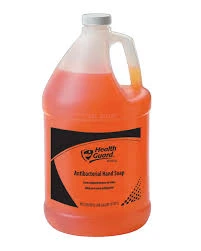Exploring the Applications and Benefits of Isothiazolinone Compounds in Various Industries
The Versatile Uses of Isothiazolinones
Isothiazolinones are a class of heterocyclic compounds that have gained significant attention in various industries for their exceptional properties, primarily as biocides, preservatives, and antifungal agents. With rising concerns about the preservation of products and the need for effective antimicrobial solutions, isothiazolinones have emerged as vital components across several applications.
What are Isothiazolinones?
Isothiazolinones, characterized by their unique chemical structure, typically contain a five-membered ring with both sulfur and nitrogen atoms. This arrangement contributes to their potent antimicrobial activity. The most commonly used isothiazolinones include 2-Methyl-4-isothiazolin-3-one (MIT) and 1,2-benzisothiazolin-3-one (BIT). Their efficacy spans across various sectors such as cosmetics, pharmaceuticals, paints, and industrial products.
Applications in Cosmetics and Personal Care
One of the most prominent applications of isothiazolinones is in the cosmetics and personal care industry. They are widely utilized as preservatives in products such as lotions, shampoos, and creams. Their ability to prevent microbial growth ensures that these products remain safe and effective for consumer use. Given the increasing demand for preservative-free products, isothiazolinones offer a reliable alternative due to their broad-spectrum antimicrobial properties.
However, there has been growing scrutiny regarding the safety of isothiazolinones, particularly MIT, due to potential skin sensitization and allergic reactions in some individuals. As a result, regulatory bodies in many countries have imposed limits on their concentration in cosmetic formulations, prompting manufacturers to seek alternative preservatives. Despite this, isothiazolinones remain a popular choice, thanks to their effectiveness and stability.
Role in Household Products
Isothiazolinones are also prevalent in household cleaning agents and disinfectants. Their potent antifungal and antibacterial properties make them ideal for use in products like surface cleaners, detergents, and mildew removers. In an era where hygiene has become a top priority, especially in light of global health crises, isothiazolinones play a crucial role in maintaining clean and safe environments. Their ability to combat a broad range of microorganisms ensures that households are protected against harmful pathogens.
isothiazolinone uses

Industrial Applications
In industrial settings, isothiazolinones are employed as preservatives in various formulations, including paints, coatings, and adhesives. These industries benefit from the addition of isothiazolinones as they help prolong the shelf life of products and prevent microbial contamination during storage and application. Moreover, their compatibility with different ingredients makes them a versatile choice for formulators seeking effective antimicrobial solutions.
Challenges and Regulatory Considerations
While the uses of isothiazolinones are extensive, they are not without challenges. Regulatory agencies have raised concerns over the potential health risks associated with their use, particularly in cosmetics and personal care products. This has led to increased scrutiny and tighter regulations, compelling manufacturers to balance efficacy with safety. Research into alternative preservatives is ongoing, and industries are adapting to meet consumer preferences for safer formulations.
Furthermore, consumer awareness of ingredient safety is on the rise, prompting manufacturers to consider the long-term implications of their product choices. As a result, some companies have begun to phase out isothiazolinones in favor of more natural or less controversial preservatives, even as the demand for effective microbial solutions continues to grow.
Conclusion
Isothiazolinones hold a significant place in various industries due to their effective antimicrobial properties. Their applications in cosmetics, household products, and industrial formulations showcase their versatility and importance. However, as we move towards a more health-conscious society, the challenges associated with their safety and regulatory compliance indicate a need for ongoing research and innovation.
The future of isothiazolinones will likely involve a careful balance between leveraging their benefits while addressing the growing concerns regarding safety and environmental impact. Ultimately, as consumer preferences evolve and regulatory landscapes change, the chemistry of isothiazolinones will play an essential role in shaping the future of antimicrobial formulations across multiple sectors.
-
Water Treatment with Flocculant Water TreatmentNewsJun.12,2025
-
Polymaleic AnhydrideNewsJun.12,2025
-
Polyaspartic AcidNewsJun.12,2025
-
Enhance Industrial Processes with IsothiazolinonesNewsJun.12,2025
-
Enhance Industrial Processes with PBTCA SolutionsNewsJun.12,2025
-
Dodecyldimethylbenzylammonium Chloride SolutionsNewsJun.12,2025





